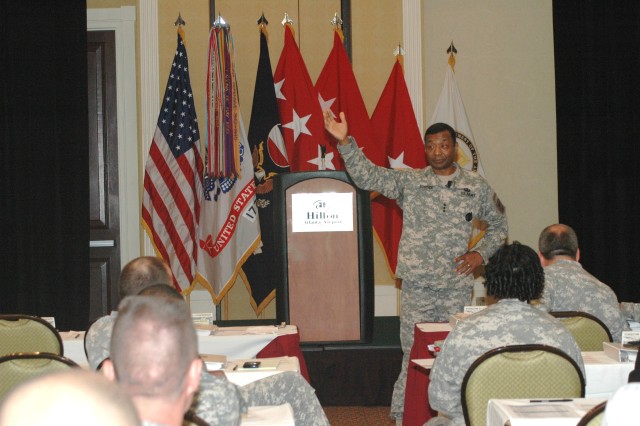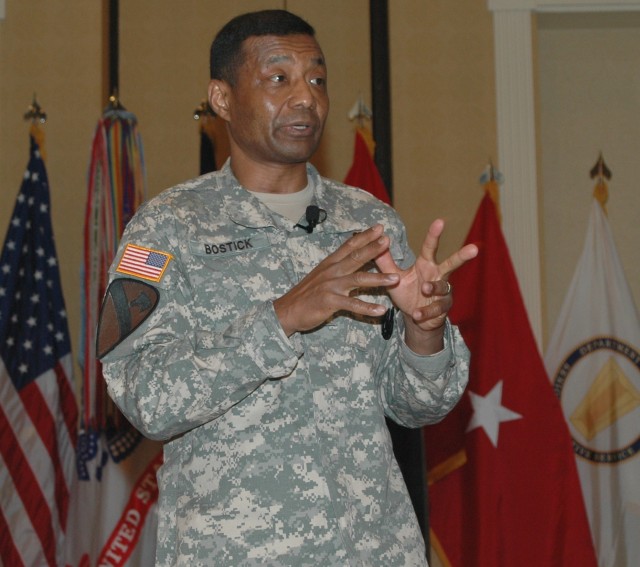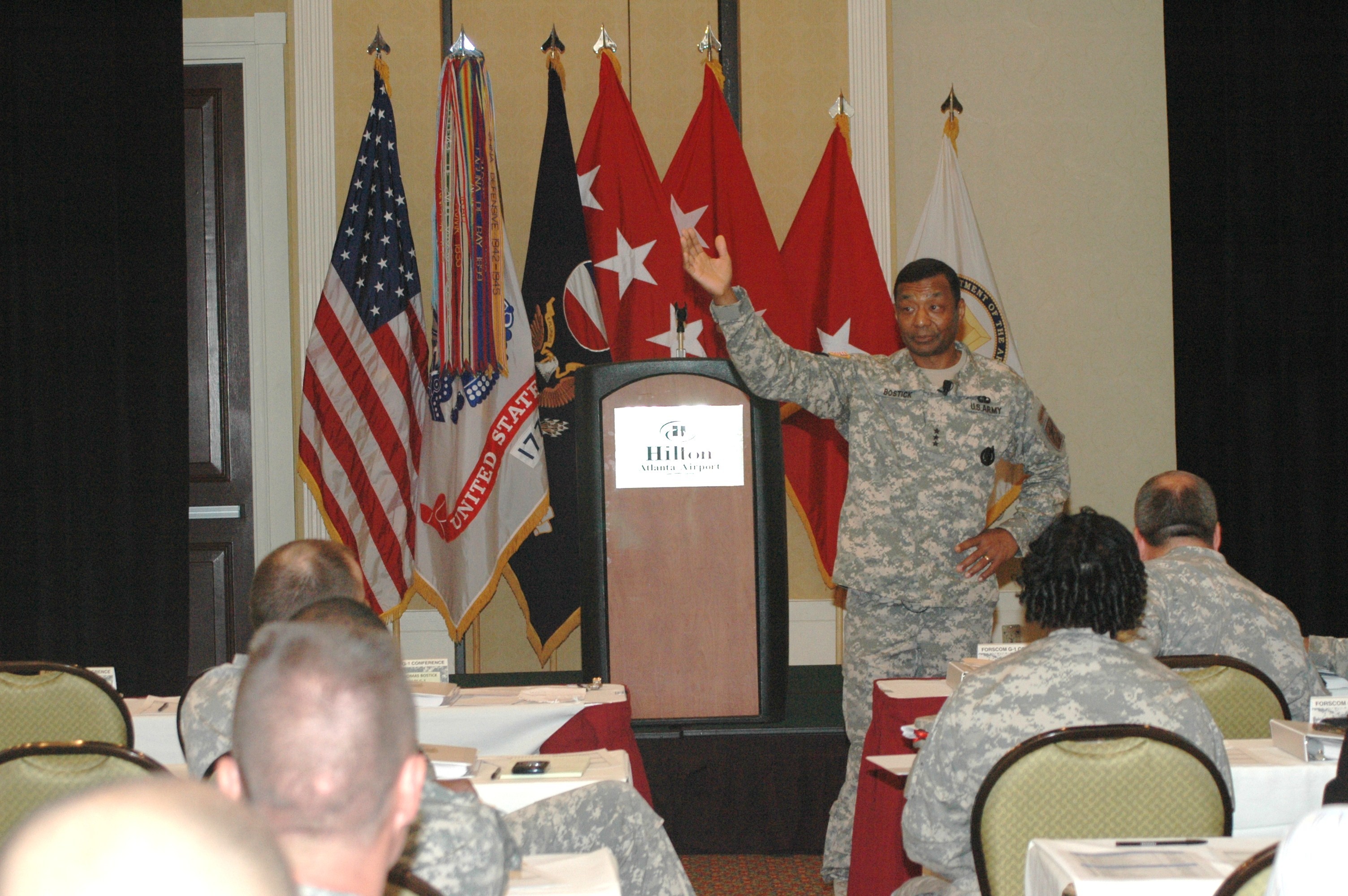ATLANTA, Ga. (May 19, 2010) Aca,!" Increasing dwell time, reducing the stress of deployments on Soldiers and their Families and determining the future size of the Army were among the key issues the ArmyAca,!a,,cs top personnel leader addressed, during his remarks to assembled senior military leaders May 19 in Atlanta.
Lt. Gen. Thomas P. Bostick, the ArmyAca,!a,,cs Deputy Chief of Staff G-1, told the audience of about 80 officers, Soldiers and Civilians at the U.S. Army Forces Command (FORSCOM) Annual G-1 Conference that he is currently evaluating whether or not to recommend further expansion of the Army.
He explained the Army is authorized to temporarily increase the size of the force from 547,400 to 569,400 Soldiers under a plan approved by Congress last year. "We brought in about 5,000 additional Soldiers in late 2009 and will do about 10,000 this fiscal year," he said. "That potentially leaves a requirement for 7,000. We're determining right now if we should go to the full 22,000.Aca,!A?
As the leader responsible for developing, managing and executing manpower and personnel plans, programs and policies for the entire Army, Bostick said he will go to Army Chief of Staff and the Secretary of the Army with a recommendation when the evaluation is complete.
However, success isnAca,!a,,ct solely about the size of the force. Bostick said itAca,!a,,cs vital to ensure the Army has the right leaders for future assignments. He spoke of how leader development is now being examined to determine how to better get Soldiers and leaders, especially field grade officers, the professional military education they need within the Army Force Generation model for deploying forces.
Bostick acknowledged the progress that has been made in raising the awareness and prevention of sexual harassment and assault, drug and alcohol abuse and suicides. However, for the sake of Soldiers, their Families and the Army, the emphasis must continue in these areas and counseling services must increase.
He also addressed the issue of women in combat, explaining that because there is no longer a clear distinction between the front line and the rear echelon in a war zone, the role of women in combat units must be and is being re-examined.
The theme of this yearAca,!a,,cs FORSCOM conference was "Human Resources: Training, Coaching and Mentoring." As such, Bostick said it captured the essence of what those charged with the Army's vital personnel matters must keep at the forefront of their thinking as they do their jobs.
As the ArmyAca,!a,,cs largest Command, FORSCOM is responsible about 750,000 Soldiers and 3,500 civilian employees, and it is the preeminent provider of expeditionary, campaign-capable land forces to Combatant Commanders worldwide.






Social Sharing